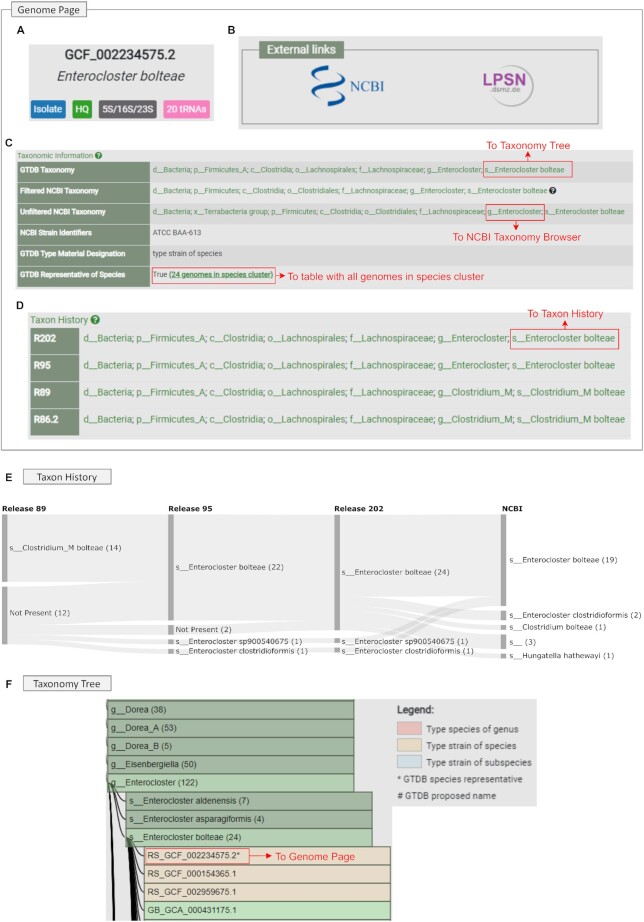Figure 2.
Taxonomic, nomenclatural, and assembly quality information provided for individual genomes. (A) NCBI genome assembly accession and GTDB quality badges associated with this genome. Hovering over a tag provides information about the criteria used to establish the tag. (B) An external link is always provided to the NCBI Assembly page of the genome as all GTDB genomes are sourced from NCBI. A link is also provided to an LPSN species page when a genome is established to be assembled from the type strain of a species based on LPSN nomenclatural information. (C) GTDB and NCBI classifications for this genome along with its strain identifiers, nomenclatural status at GTDB (i.e. type strain of the species), and GTDB species representative status. GTDB taxa link to their corresponding position in the GTDB Taxonomy Tree (i.e. Figure 2F) while NCBI taxa link to NCBI Taxonomy Browser pages. Each genome also links to a table indicating all genomes in the same GTDB species cluster. (D) GTDB classification of the genome in each GTDB release. GTDB taxa link to their corresponding Taxon History page (i.e. Figure 2E). (E) GTDB Taxon History view for genomes classified as Enterocloster bolteae indicating this species was reclassified from Clostridium_M to Enterocloster in GTDB R95. Numbers in parenthesis indicate the number of genomes assigned to a taxon. The Not Present label indicates genomes that were not available at the time of a GTDB release or failed the GTDB quality-control criteria used for the release, and thus had no GTDB classification. (F) GTDB Taxonomy Tree which provides a hierarchical exploration of the GTDB taxonomy and indicates nomenclatural type information, genomes selected as GTDB representatives, and Latin names in the GTDB which remain to be validated. Genomes link to their corresponding GTDB Genome page (i.e. A–D).

